Hydrotherm’s Rough in Process
It took two days to complete the ‘rough in’ process, the plumbers basically ran, from the Bosche boiler, 25 inch pink Rehau piping, into 20 down to 16 into the chrome copper, where it comes out the wall, where it meets chrome and brass pipes going into the walls and outside, ready for the boiler. The black pipe usually used for plumbing can’t be used with hydronic because it’s transparent; whereas, the pink is not. The pipe is insulated with black foam. Pink Noggins were put in so they have something to screw into when they come back for the ‘fit out’. That’s when the real stuff happens!
For now it’s been pressurised with most of the water the system will ever need.

In the next part of the fit out: After the hydronic heating panels are connected to the noggins, a central control panel is placed in the main living area. This is where the temperature can be set, on a timer, or automatically switched off once the house is warm enough: this is where the beauty of the system comes in: the water in the panels and pipes stays hot, aka free heating. They can run on both gas and electric. Ours has a Bosch boiler, which runs on gas and is installed outside, away from any opening windows—being gas and all. Don’t want that wafting through the windows, inside.
The panels can be painted in powder coat to match any of the Dulux colour range. It’s cheaper to go all white though. Although, to match the bright pink/red feature wall in my office, I’d love a fire-engine red panel; I’m still thinking about the $110 extra that it would cost, and how it wont fit into the project’s budget.
Our pipes were located at 1100mm off the ground.
And this is our boiler:
Are they Mould Free?
In reality, there are no filters to change or clean, which means there’s no place for mould to grow: dust, mould’s main food source, cannot congregate. But what I like best about these heaters is the fact that once paid for—because of the installation, they do cost more than most heating systems upfront—they begin to pay for themselves as time goes on until eventually, you get your heating for free. Now, if you were to go solar, harnessing the sun’s energy, with one of those awesome Tesla batteries, you’d be off to a free start much sooner.
How to Clean the Panels
Just use a dust collecting cloth like Sabco or even use the dust brush on your vacuum. Pretty simple!
How do they guarantee it won’t leak?
Rehau fittings are 99.9% guaranteed not to leak.
Other Guarantees:
7 years on the panels; 7 years on the installation. The boiler is a five year guarantee. If something did leak, Hydrotherm would go back to the company and insurance would cover water damage–or the prevention of it, rather.
It’s a sealed system that doesn’t need replenishing. Only half a glass of condensation is released per year into the atmosphere. That half glass condensation is released into the building envelope over the course of a year. That’s it for adding moisture to the building.
Because our house is so well insulated with breathing walls, it shouldn’t be an issue.
Our First and Last stop was Hydrotherm
But we did get three quotes, Hydrotherm being the first and only showroom we went to. It was back in 2011, planning stage and my health declined from around that time so I wasn’t up to going to showrooms without going to the hassle of making fragrance free appointments.
Our Only Challenge on the Day, Solved by Hydrotherm
The front, north facing (sunny side), has a room somewhat like an entrance room but it’s closed in, like an air-lock. There’s the front door, then, leading out into the house, is a glass wall made from a large window joined by a Zenit glass external ‘lift and slide, tilt and turn door‘ (I’ll show you these in detail later, in my 7 part window series)—used internally—to create a room that’s not only an air-lock but will be used to prevent unwanted mould exposures, chemical exposures and allergic reactions to items bought into the living spaces.). Everything stops right there before coming into the house. There will be no exposures in my home-to-be!


We didn’t include a hydronic panel because it’s north-facing. We thought the sun would heat this room just fine. You see, based on ‘passive heating’ design where the north-facing windows are floor to ceiling, while the eaves come out 600 mm to block the higher-in-the-sky summer sun yet allowing in the lower-in-the-sky winter sun, it stays warm when it’s sunny even on a cold day. But what about those Melbourne days, weeks even, where we don’t have any sun? I mean this is a room where someone may have to change clothes before being allowed in to shower, if they are contaminated with fragrances, or, worse, mould… (Yeah, I know, better get some blinds, lol.)
It wasn’t really a problem, because even though there wasn’t room for a panel—it seemed, as the room has glass on three sides—and a wall to wall cupboard on one, where was there room?
One of the Hydrotherm crew phoned into the office with the specs of a small corner and we were fitted for a vertical panel heater like this one:
A post shared by Hydrotherm Hydronic Heating (@hydrotherm_hydronic) on
Why we used Hydrotherm
For us, the most difficult part was making sure all the materials were health friendly for myself—meaning that they are VOC, petrochemical and of course, mould free. Plus, I had to know exactly which chemicals would be used for installation, and if it were possible to use our chemicals, which we had tested for safety; but most of all, I needed the tradespeople to go fragrance-free (See first post on how to organise this.). Now, if that laundry list of wants is not long enough, we needed the best price! Hydrotherm came to the party! They beat other hydronic companies by up to half in one of the quotes, and were willing to match any cheaper price. Considering the panels are powder coated stainless steel metal and the towel racks (which act as bathroom heaters as well), chrome.

A Clean Building Site is a Good Start to a Mould-free Home
Building a mould free home means that you must keep the wall cavities and floors dust and debris free. This way mould has been robbed of a food source, lessening the chance of it growing; and if the wall cavities and roof trusses are kept dry there will be no mould. When it came to any mess from our hydronic fit out, Hydrotherm cleaned up after the job. (This is not just a tradies job, it’s yours: a building site for a CIRS patient must be kept impeccably clean!)
Chemicals Used
We used ‘Sellys 3 in 1 Silicone’: very low VOC. However, when Hydrotherm come back we’ll have a better silicone, as far as being water-tight goes: Sikaflex. Just stay far away until it’s dry. And, as always, test for your own suitability on a clean piece of tile, left out overnight, then bought inside if you don’t have symptoms with it. I’m finding there are products I’m not good with wet but fine with once dry. And I’d rather a silicone that keeps water out, right? Plus we used mortar on the outside of any hole protruding through the building.
On instagram I posted about this Camel Rock Yoga mat Mandala in the back room, the retreat. Southside. All glass windows. Wicked view. Andrew, the manager from Hydrotherm Hydronic Heating, pointed out how this room could be used for Bikram, hot yoga. This is going to be a thing. Thanks, Andrew.
Hydrotherm Part I: Radiant Heat Fights Allergies with Hydrotherm Hydronic Heating
Hydrotherm Part II: Why Hydrotherm Hydronic Heating is a Breath of Fresh Air
Hydrotherm Part III: Hydrotherm Hydronic heating for our Eco-friendly, Allergy Free House
Hydrotherm Contact Details
Hydrotherm: Hydronic Heating
Greenheat: Hydronic Heating
Hydrotherm Instagram

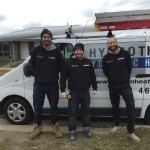
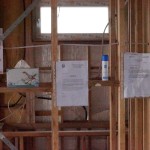
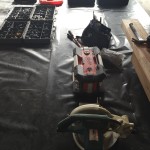
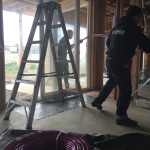
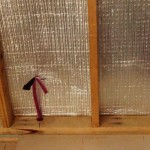
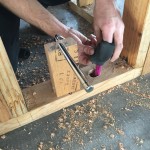
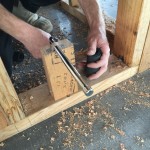
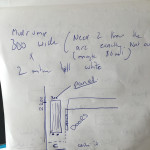
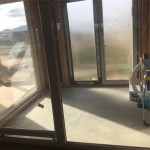
[…] Hydrotherm Part III: Hydrotherm Hydronic heating for our Eco-friendly, Allergy Free House […]